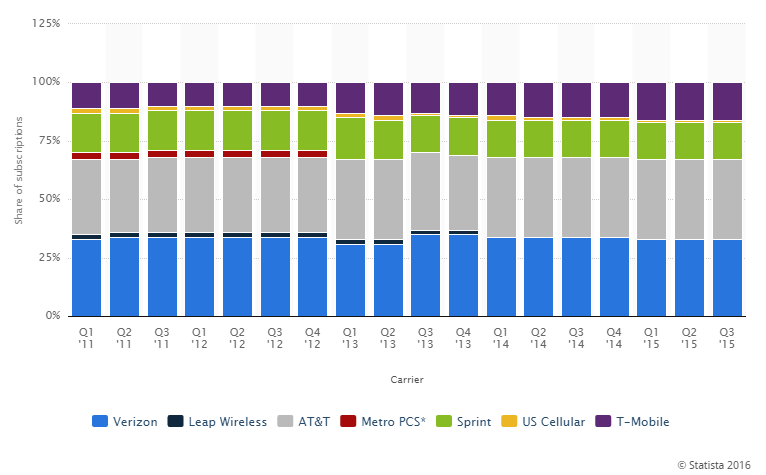Within the past year, mobile operators have been working hard to build relationships with major information and communications technology (ICT) vendors to gain more relevance in the enterprise ecosystem, particularly in regards to IoT value-added services. Recent notable partnerships include AT&T and IBM, Verizon and Cognizant, Tele2 and HCL Technologies, and Vodafone and Huawei. These partnerships are critical to operator growth in IoT to add more connections on the networks, build new enterprise relationships, and add new revenues from applications and data/analytics services. But less understood is the impact IT firm relationships have on mobile operator’s smartphone businesses; mobile operators gain a majority of their wireless revenues from smartphone connections. Image dicovered via statista.com

For IoT services, IT-centric firms, such as HCL Technologies, Cognizant, and IBM understand that their greatest value is in managing machine data and providing insights based on analysis of that data. However, they are not as adept at extracting the machine data, which can require expertise in embedded software/hardware engineering, communications devices, and networking.
Communications devices and networking are mobile operator core competencies. And some mobile operators are starting to excel in other areas. AT&T, for instance, is offering through its innovation centers embedded software/hardware engineering services designing and building sensors.
The bigger prize for mobile operators from these relationships is the benefits to smartphone services revenues. Smartphones are an important if not primary hub for many IoT applications within the connected car, smart home, healthcare, and connected machine field services sectors. It is these IoT applications that drive up the value of the smartphone and therefore help operators maintain their smartphone data plan fees.
The numbers paint a clear picture. Worldwide handset data plan revenues, which are dominated by smartphones, across business and consumer segments, were approximately $350 billion in 2015 and will grow to about $475 billion in 2020. In the enterprise segment alone, handset data plan revenues were $153 billion in 2015 and will grow to more than $200 billion in 2020.
In contrast, IoT services revenues for data and analytics, as well as professional services that include applications/development, systems integration, and consulting, will grow from $44 billion in 2015 to $128 billion in 2020. If only considering cellular connections, these same revenues value in at $20 billion and $72 billion, respectively.
While IoT services revenues are significant, smartphone data plans are still the backbone of mobile operators’ business. For a mobile operator to neglect IoT is a paramount mistake, as IoT applications help maintain a data plan’s value, regardless of whether or not they pursue IoT services. Moving forward, operator smartphone strategies need to evolve to support the myriad of applications and opportunities that will stem from the billions of connections in the IoT. This can be something as simple as shared data plans across IoT and smartphone assets, to full IoT solution services.
Mobile operators that are serious about IoT are transforming their business models to offer more value-added services and the ICT partnership is an important first step in this journey. A critical side benefit for operators is the positive impact of these relationships on its smartphone businesses. Interestingly a future benefit for operators is they become bonafide IT services firms themselves. Whether this becomes a reality is up for grabs. As for today, the mobile operator-IT services firm relationship is very complementary. Both are benefitting from a growing IoT market expected to grow to over 22 billion connections by 2020.
By Dan Shey





